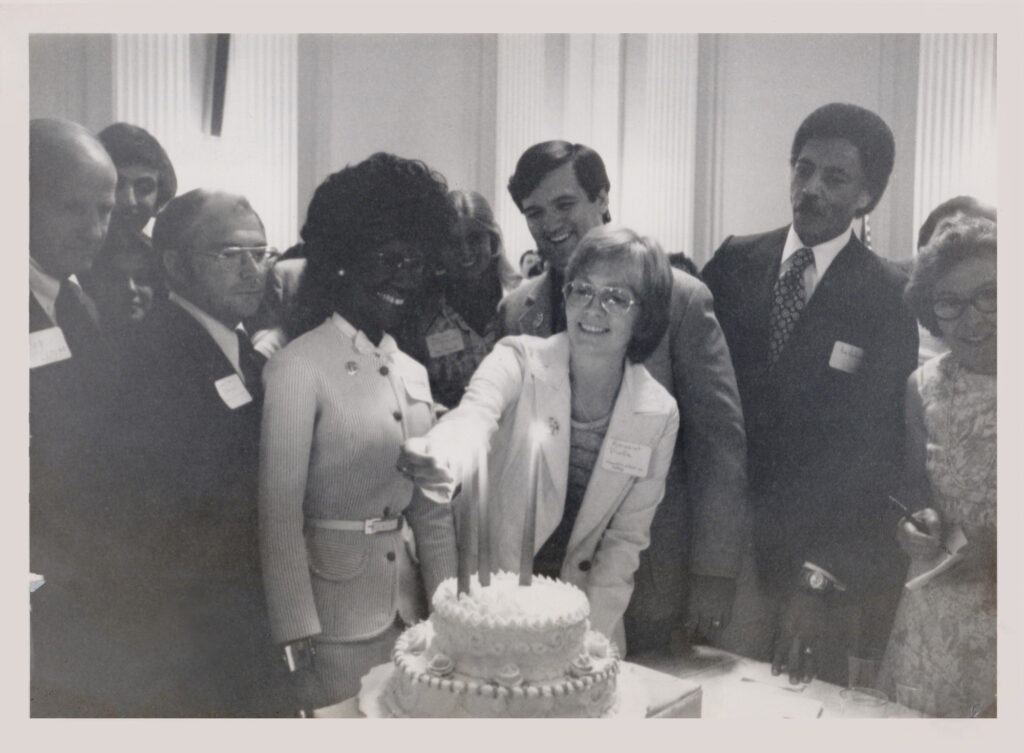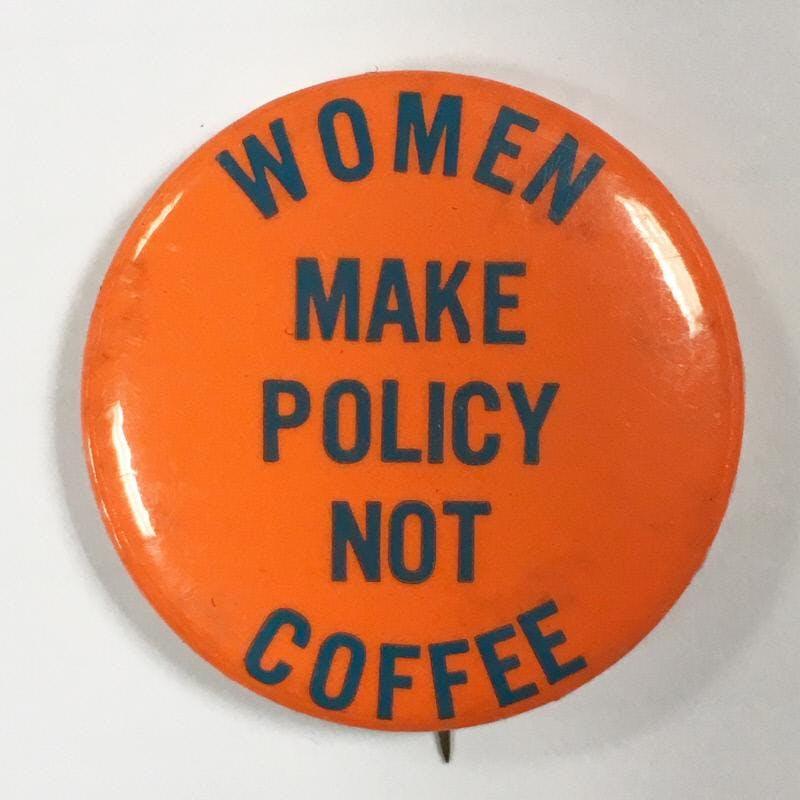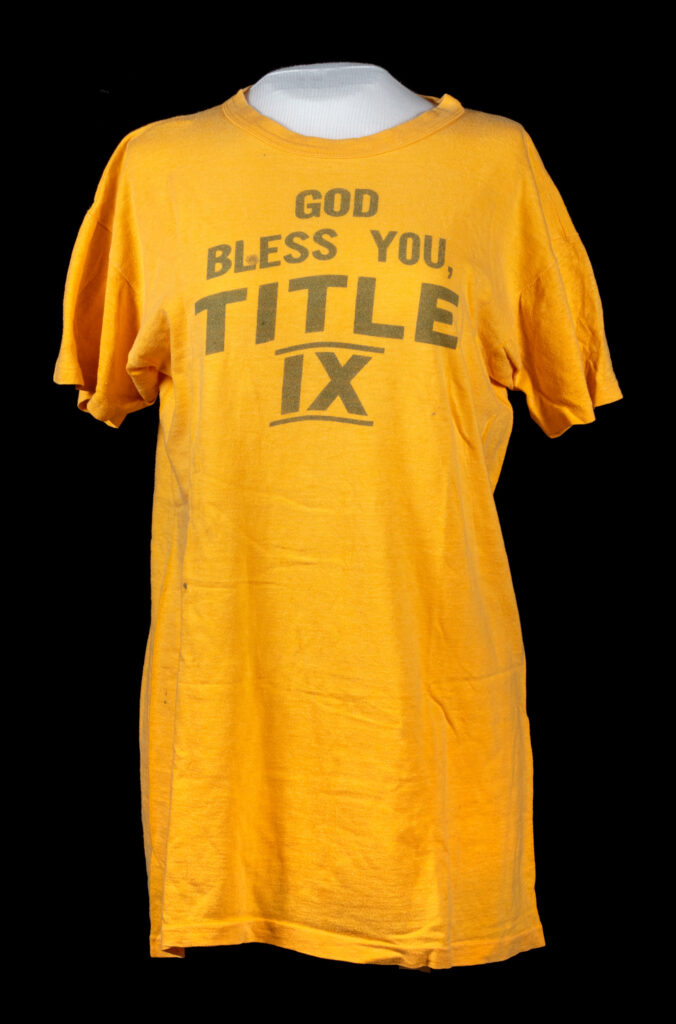
“During the 50 years since its passage, Title IX has transformed many aspects of American life. The number of girls and women participating in sports has skyrocketed. More women now enter universities and workplaces. Protections for LBGTQ+ students are now under Title IX’s umbrella under the current administration. Although the definition of sex discrimination under Title IX has never been static, fundamentally, Title IX’s mission remains unchanged: ensuring that all students can participate in educational life free from sex discrimination.”
—Laura Mogulescu, Curator of women’s history collections at The New-York Historical Society
After many obstacles and successes, Title IX finally passed in June of 1972. The provision would go on to cover a broad swath of American educational life, from K-12 to higher education, for an uncounted number of girls and women.
Now on the 50th year anniversary of its historical passage, the “Title IX: Activism On and Off the Field” exhibit at The Center for Women’s History at The New-York Historical Society, celebrates the addition to the Education Amendments Act of 1972 that fundamentally reshaped American society by prohibiting discrimination based on sex in education programs or activities that receive federal assistance.

Taking an immersive approach, the exhibit’s story starts with the battles in Congress and the court system. The first section of the exhibit, “On the Hill and Bench” documents the work of activists across the country who experienced sex discrimination in education and professional careers within federal government agencies. These experiences made them especially qualified to advocate for meaningful regulations for Title IX and to defend the law against amendments intended to weaken it.
Supporters and members of Congress, including Shirley Chisholm, attended the third birthday party for Title IX. There, a “God Bless Title IX” pin was distributed to supporters, politicians and government staff to signal support of the legislation.
The next section, “On Campus,” features personal items related to student protests. Here, you’ll see a Yale Women’s Crew sweatshirt worn to a 1976 “strip-in” protest to flyers and signs made for demonstrations against sexual violence on campus. These personal items convey the passion and commitment of these students.

In a space evoking a stadium, “In the Arena” explores the explosion of girls and women engaging in sports and fitness after the passage of Title IX. Artifacts from professional athletes and the consumer culture that arose to celebrate them—from Barbie dolls to Wheaties boxes—chart the opportunities for women athletes and the new standards of femininity and strength.
As a note, although Title IX was based on the Civil Rights Act, the federal government ultimately endorsed sex-segregated sports following extensive debate by women’s rights organizations, athletics organizations, schools, and students. Best known for its twin flash points of sports and sexual harassment, that decision to endorse sex segregated sports took place after extensive debate but was also based on the understanding of gender at the time.
“In the Classroom” includes items documenting how Title IX aided efforts by parents, teachers, and schools to create new curricula challenging gender stereotypes. Children’s books and classroom materials from the 1970s to the present day show how as understandings of gender have changed, so too has the definition of sex discrimination under Title IX.
“In the Future” closes with a celebration of the law’s accomplishments and a look at what remains to be done. It suggests how the next generation of activists might use, reform or reimagine the law to fight sex discrimination in educational spaces.
“Title IX: Activism On and Off the Field” is on view May 13–Sep. 4, 2022 at The Center for Women’s History at The New-York Historical Society.
Up next:





